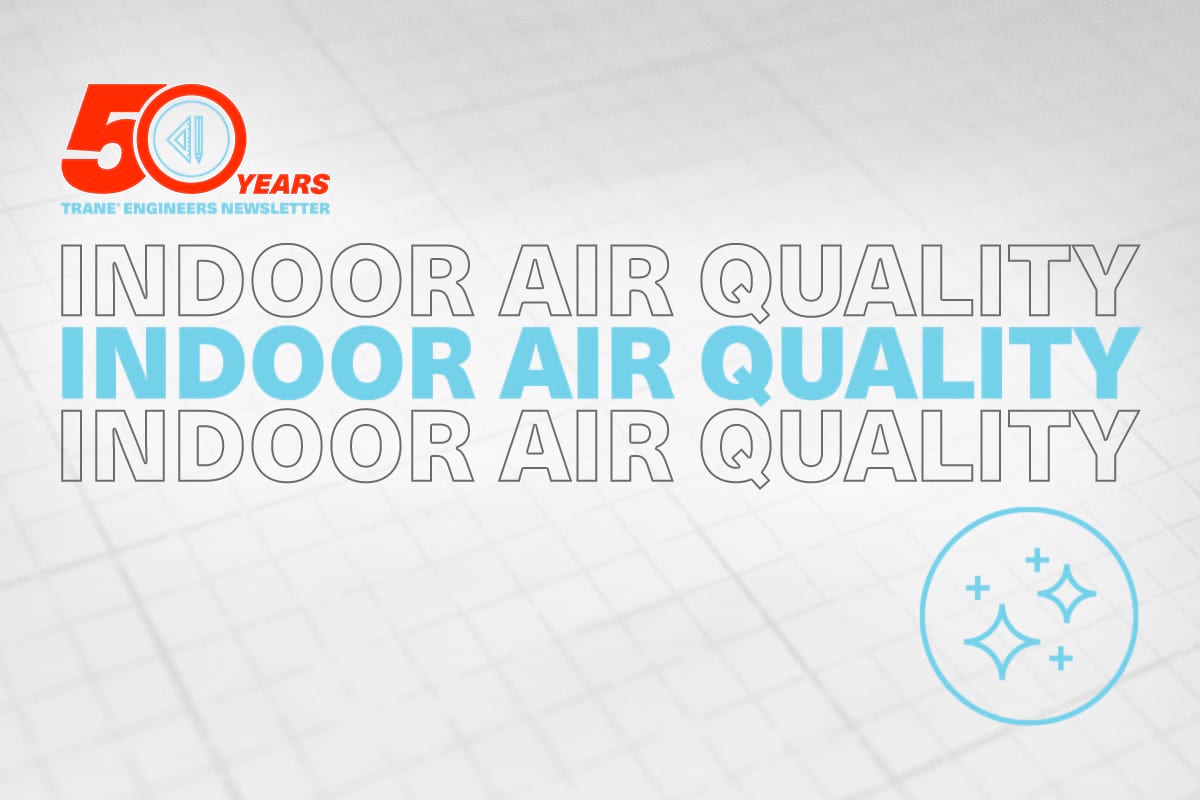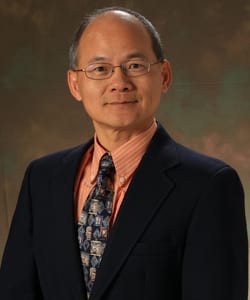
Hooray, it’s May! This reminds me of May flowers and “May the 4th” for you Star Wars™ fans. For those of us living in northern climates, the flowers have started to bloom, and it is time to enjoy the beauty of the outdoors and nature. My name is Chris Hsieh and I have been with Trane® for the past 25 years. Throughout my time with Trane, I have supported a variety of initiatives, notably the international service market, Six Sigma projects, green buildings industry, and TRACE® energy modeling. My current role is as an applications engineer with a focus on airside and indoor air quality (IAQ) issues.
In this month’s 50-year Engineers Newsletter anniversary blog, we dive into IAQ. For IAQ basics, HVAC manufacturers pay special attention to make sure that the coils are clean and drain pan can drain out any excess water. Before the 1970s, the primary indoor environmental focus was thermal comfort and acoustics, with humidity and ventilation being secondary concerns. With the publication of ASHRAE® Standard 62 “Ventilation for Acceptable Indoor Air Quality” in 1973, designers had new guidance to improve IAQ. ASHRAE Standard 62 branched off into 62.1 for commercial buildings and 62.2 for residential buildings.
For the past three decades, we have often written about indoor air quality and ventilation, with a particular focus on the Standard 62 calculation procedures. For example, we discussed “Designing an ASHRAE 62-Compliant Ventilation System” in 1995. When Standard 62.1’s Ventilation Rate Procedure underwent a significant change, we published “Addendum 62n Breathes New Life into ASHRAE Standard 62” in 2004. Included below are links to additional Engineers Newsletters with focus on IAQ and Standard 62.
- The Threefold Challenge of Ventilating Single-Duct VAV Systems (1998)
- Dehumidify with Constant-Volume Systems: It May Take More than You Think (2000)
- Better Part-Load Dehumidification: It's Not a Pipe Dream (2004)
- Advances in Desiccant-Based Dehumidification (2005)
- Minimum Outdoor Airflow Using the IAQ Procedure (2011)
- ASHRAE Standard 62.1-2019 Update (2020)
Prior to COVID-19 in late 2019, designers focused on designing ventilation systems according to minimum ventilation rates necessary for compliance with ASHRAE 62.1. Suddenly, health and safety became the top priorities for everyone. The ASHRAE Epidemic Task Force combined a wealth of information for HVAC practitioners in record time. Trane published an EN to help summarize the Epidemic Task Force’s effort and to highlight key strategies. This EN also went through a revision because of changes made by the Epidemic Task Force. The publication was designed to address common requests and confusing subjects, but it is also easily updated as industry best practices evolve.
My hope is that IAQ can continue to be a significant consideration when it comes to building design and operation. Quite possibly a pandemic mode of building controls could be considered and incorporated for any potential future impacts.
We encourage you to subscribe to the Trane Engineers Newsletter to receive future issues and in order to better serve our readers, we welcome your feedback.
Engineers Newsletter

About the author
Chris Hsieh, Applications Engineer
Chris has been with Trane in La Crosse since 1996. He is one of the contributing authors for the Trane Engineers Newsletter and the Engineers Newsletter Live programs. His engineering focus includes system applications support, industry-related green/environmental programs, ENERGY STAR®, LEED, ASHRAE 189.1, and IAQ initiatives. Chris is active in various ASHRAE technical committees, most recently serving on the ASHRAE 62.1 committee, and has served as a consultant for ASHRAE’s SSPC 189.1 since 2013.
Chris also assisted LEED EB (Silver) certification for the Trane St. Paul facility and LEED NC (Gold and Certified) certifications for the Trane Taicang office and facility buildings. He is a LEED-AP BD+C, certified energy manager, UL environment DfS (Design for Sustainability) gold certified, and member of ASHRAE.
Chris is enthusiastic about youth education with a focus on STEM and volunteers his time as a math club coach for a local middle school, helping to advance the team to the state-level competition three years in a row.











































































